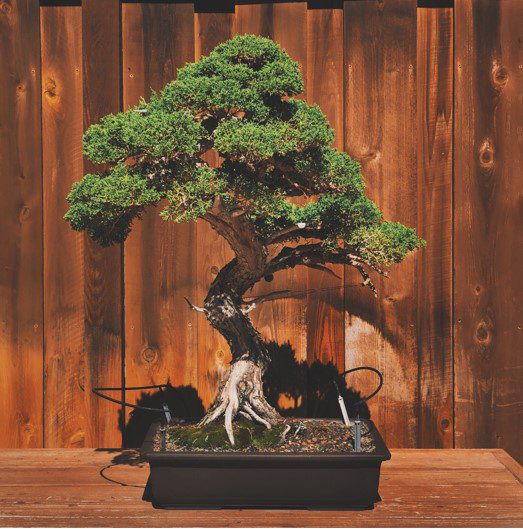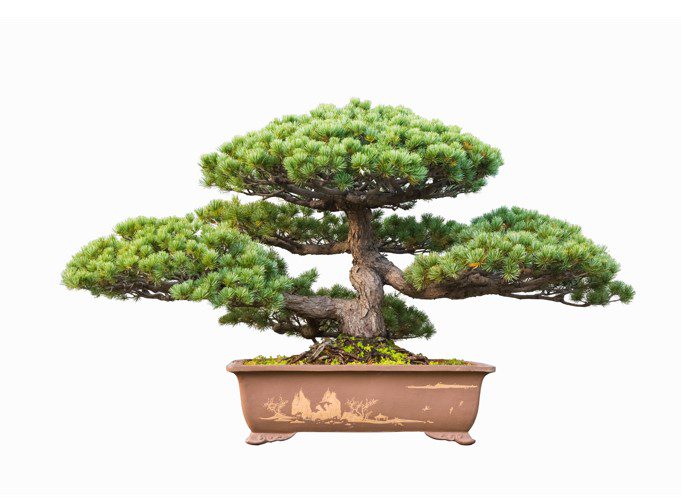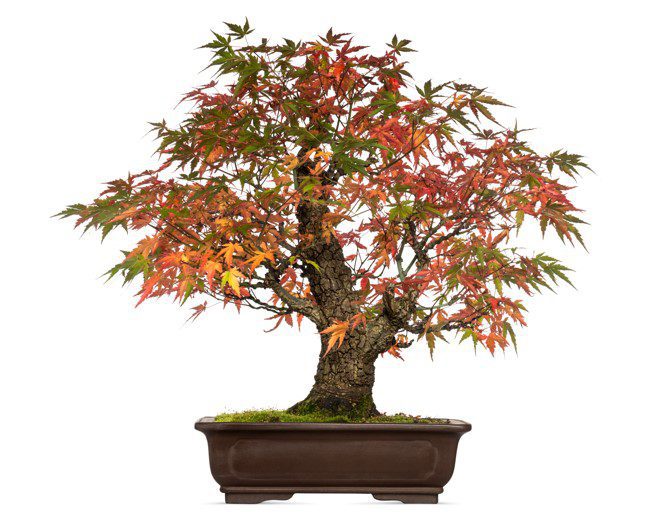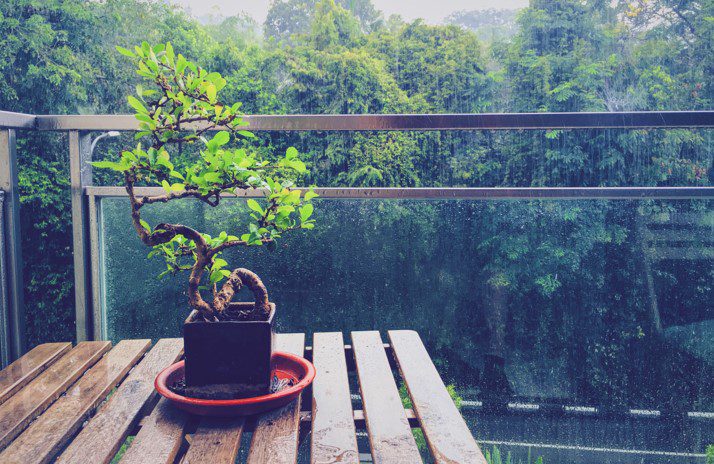Bonsai Tree
Christmas has gone, and many of you will be the proud owners of a small bonsai tree.
The most critical question to be answered now is, “how do I keep it alive?” Two words spring immediately to mind: “outside” and “water.”
The word bonsai, literally translated from Japanese, means “a tree in a tray,” so your tree’s basic needs are the same as those of a tree in the wild.
Like its full-sized counterpart, your bonsai tree will progress through the seasons, with a flush of new growth in the spring, a time of little growth in the hot summer, and another period of growth during the early autumn. Autumn will also bring color to the leaves of your deciduous trees before their growth slows right down for its winter dormancy.
I have already mentioned the fresh air your tree needs, so it should be in a spot where it can enjoy a few hours’ sunshine each day and a gentle breeze, but not so exposed that it bakes in the fierce sun or is blown to bits. An ideal place will be a sheltered corner with morning sun.
Because the pot has only a tiny amount of soil, it is prone to drying quite quickly, so daily watering is necessary for hot weather. As autumn progresses into winter, nature often takes care of the watering for you, but it is essential to check that there is sufficient moisture.
New shoots may be leaping out from all over your tree if you have cared for it well. Your neat little maple or pyracantha may be beginning to look like a hedgehog. What will you do? Clip it back as though you are trimming a hedge?
Nearly right. To keep your tree looking tidy, you will need to carefully nip back new growths to about two leaves from their growth point.
Our New Plymouth Public Library has a good selection of bonsai books. An even better idea is to bring your tree along to the monthly meeting of the New Plymouth Bonsai Club, which meets in the Blind Foundation Hall, Vivian St, at 2 pm on the last Sunday of every month (except December).
Because our meeting would clash with Easter this month, the March meeting has been brought forward to Sunday. You’ll be very welcome, and a member will be happy to advise you, show you how, or help you trim your tree so you will know how to do it next time.
To keep your tree growing well, it needs to be fed adequately, but not too heavily. A balanced liquid fertilizer during the spring, summer period, with a slightly higher rate of potash in the autumn.
Your tree (or trees if the bonsai bug hooks you) will give you many years of pleasure.
Is Bonsai Tree For Everyone?
If you want something to plant and forget, don’t buy a bonsai tree.
The miniature trees require pruning and daily care most of the year. But they give back visual appeal, tactile pleasure, and, one hopes, longevity.
Bonsai means ”tree in a pot.” The art of pruning and styling trees into the classic bonsai shapes has been practiced in Japan for hundreds of years.
There are two categories of bonsai. Hardy bonsai, the biggest category, live outdoors and go through all the seasons, including changing colors and losing leaves if they are deciduous. Many are evergreen.
Because they’re grown in containers rather than the ground, their roots are vulnerable. They need winter protection such as placement in an area away from harsh winds, along with adequate mulching and ”heeling in,” burying with additional soil.
Tropical varieties such as ficus and serissa cannot withstand temperatures below freezing and must be brought indoors in the winter.
Bonsais can be started in two ways:
The grower can select an immature plant and train it as a bonsai from the beginning of its life, perhaps with a stint in the field to promote faster growth.
Or he may select an older tree with a trunk that is tapered toward the top, has small foliage, and the look of an old, twisted tree. With root pruning and other bonsai techniques, he can turn it into a miniature.
Beginners are advised to buy a healthy bonsai from a reputable dealer. They can be purchased for under $10, although especially fine specimens will sell for hundreds.
Except when protected for the winter, bonsai trees should be placed on a table or bench outside so they can be viewed and cared for at eye level. Most respond best to early morning sun and afternoon shade, although others like pines and junipers need full sun. Members of the maple family prefer shade.
Watering is one of the essential components of bonsai tree care.
Bonsai should be thoroughly watered once a day during the spring, summer, and fall, preferably in the early morning or late afternoon. They should be thoroughly soaked until excess water comes out from the drain holes in the container.
Because bonsai are grown in a small amount of soil in a container, fertilization is also necessary. Time-release, organic, and water-soluble fertilizers can be used.
Bonsai are pruned and trimmed throughout their growth periods to maintain the desired shape. Vigorous new growth is removed in the spring. ”Styling” or wiring branches into position is the most complicated aspect of cultivation.
Best Bonsai Trees For Home
Juniper (Juniperus spp.)

Juniperus are an extensive genus that includes more than 50 evergreen coniferous conifers and species renowned in bonsai gardens. Every species of Juniper can be grown successfully as bonsai.
The bonsai of junipers is popular due to two primary reasons. First, the petite leaves are a perfect match for the small-scale design of bonsai. And secondly, they are sturdy trees that can stand up to vigorous pruning. Juniper bonsai plants do not thrive indoors, and it is vital to plant them in moist soil.
- Lighting: Light that is bright and sunny.
- water: Allow soil to dry just a little before the watering
- Color variations: Needles can be yellow, pale green, and dark green (depends on the species)
Pine (Pinus spp.)

Pine trees are a popular choice for bonsai due to their durability and capability of being trained. In reality, they can be made into almost every bonsai type known. Pine trees are distinguished by needles that appear in bundles between two and five and a bark that turns flaky or scaly as the tree grows older. Magnificent species for bonsai are Pinus thunbergii (Japanese Black pine), P. Mugo (mountain pine), P. sylvestris (Scots pine), and P. parviflora (Japanese white pine).
- Light: Full sun
- Water once soil appears dry.
- Color variations: Needles range from light green through bluish-green and darker green (depends on the species)
Japanese Maple (Acer palmatum)

Japanese maples bonsai tree is deciduous hardwoods famous for their red-burgundy or green leaves that change to bright orange, bright red, or yellow in autumn. The bark of the young Japanese maples tends to be reddish or green, but it can turn gray or grayish-brown as they age.
A note to bonsai tree lovers who don’t have plenty of time to devote to the art of making bonsai: Japanese maples need lots of water, particularly during the growing season. Based on temperatures, they might require daily watering or even several times per day.
- Light: Sunny, partial sun
- Water: Requires frequent watering (daily or more)
- Color Varieties: Some varieties have red or yellow leaves from spring to fall, while others are reddish in spring, turn green in summer, then transform into brilliant reds, yellows, or oranges in fall.


























